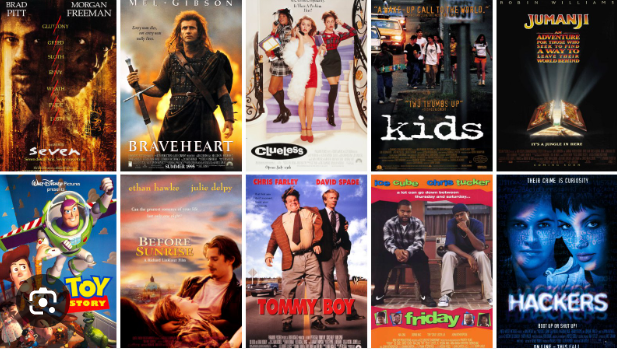Film scores are more than just background noise; they are the invisible characters that guide our emotions, underscore pivotal moments, and shape the movie’s atmosphere. When crafted skillfully, they can be as memorable as any line of dialogue or plot twist. In this blog, we’ll explore the influence of iconic film scores on the cinematic landscape, focusing on three key points.
John Williams and the Power of Leitmotif
If you’ve ever found yourself humming the themes from “Star Wars,” “Jaws,” or “Indiana Jones,” you have composer John Williams to thank. His mastery of the leitmotif—a recurring musical theme associated with a particular person, place, or idea—has become a staple in modern cinema. Williams’ compositions serve as an auditory shorthand, immediately conveying an emotion or signifying a character’s entrance.
For instance, the two-note motif in “Jaws” instantly signals impending danger, creating a tension that lingers even when the shark is not visible on screen. Similarly, the “Imperial March” in “Star Wars” has become synonymous with Darth Vader and the dark side of the Force. The leitmotif becomes a character unto itself, evolving and transforming along with the narrative arc. It’s a testament to Williams’ skill that these motifs are recognizable even outside their filmic context, attesting to the lasting power of an effective film score.
Ennio Morricone’s Atmospheric Narratives
Italian composer Ennio Morricone was a master of using music to create atmospheric narratives. His work on Sergio Leone’s spaghetti westerns, most notably “The Good, The Bad, and The Ugly,” is a case study in how a score can enhance a film’s visual storytelling. Morricone didn’t just compose music; he sculpted sonic landscapes.
The opening sequence of “The Good, The Bad, and The Ugly” uses music to introduce each of the main characters before they even speak a word. The haunting whistles, electric guitar, and chorus create an aural tapestry that perfectly complements the sun-soaked, gritty world of the American West. The score becomes an additional layer of storytelling, filling in emotional and narrative gaps that visuals alone cannot convey. Morricone’s music is so integral to the film’s identity that it’s hard to imagine these classic scenes without his pioneering score.
Hans Zimmer and the Modern Soundscape
Hans Zimmer has brought film scores into the 21st century with his innovative use of digital sounds and non-traditional instruments. His score for Christopher Nolan’s “Inception” is a prime example. Instead of relying on a full orchestra, Zimmer used a blend of electronic music, synthesizers, and even slowed-down versions of Edith Piaf’s “Non, Je Ne Regrette Rien” to create a soundscape as complex and layered as the film’s plot.
The “Inception” score goes beyond traditional melody to play with the audience’s perception of time and reality. It’s not just background music; it’s an integral part of the storytelling process, shaping our understanding of the film’s complex timelines and dream sequences. The pulsing rhythm and oscillating tones build a sense of urgency, pulling us deeper into the labyrinthine plot. Zimmer’s work reminds us that in the age of digital filmmaking, the film score can be as cutting-edge and boundary-pushing as the visuals it accompanies.
Howard Shore and the Transformation of Middle-Earth
Howard Shore’s sweeping orchestration for “The Lord of the Rings” trilogy created a musical universe as rich and detailed as J.R.R. Tolkien’s fictional world. Utilizing a variety of themes to represent different races—like the Elves, Hobbits, and Men—and important locations like Mordor and the Shire, Shore’s music provides an emotional depth to the film that reinforces its epic scope.
Take the Fellowship theme, for example. It begins as a soft, modest melody that gains complexity and emotional weight as the characters face numerous trials and tribulations. It evolves just as the Fellowship itself does, becoming more fragmented and sorrowful as the group faces internal conflicts and external dangers. Or consider the haunting, discordant strains that accompany scenes in Mordor, perfectly encapsulating the land’s menace and desolation. Shore’s meticulous attention to musical detail makes Middle-Earth not just a place you see, but a place you feel, elevating Peter Jackson’s visual epic into something that deeply resonates with our emotions.
Alexandre Desplat and the Intimate Moments
While many composers focus on grand, sweeping scores that fill an entire theater with sound, Alexandre Desplat specializes in the intimate, the quiet, and the nuanced. His work on films like “The Shape of Water” and “The Grand Budapest Hotel” demonstrate how music can highlight the subtler moments that might otherwise go unnoticed.
In “The Shape of Water,” Desplat uses flutes and accordions to evoke a sense of whimsical romanticism, contrasting sharply with the darker elements of the story. This isn’t a grand epic; it’s a love story, albeit a highly unconventional one, and Desplat’s music complements this beautifully. He shows that film scores don’t have to be grandiose to be impactful. Sometimes it’s the softer, quieter moments, musically speaking, that stick with us long after the credits roll.
Danny Elfman and the Sounds of Whimsy and Dread
If you’ve ever watched a Tim Burton film, then you’ve likely been enchanted by Danny Elfman’s musical stylings. Elfman, who frequently collaborates with Burton, has a knack for capturing the whimsical and the weird in his compositions. Whether it’s the quirky, frenetic energy of “Beetlejuice” or the melancholy strains of “Edward Scissorhands,” Elfman creates scores that are as distinctive as the films they accompany.
His music adds layers of emotional complexity to Burton’s visuals. Take “The Nightmare Before Christmas” as an example; Elfman’s score (and his singing voice for the lead character, Jack Skellington) perfectly encapsulates the film’s blend of joy and melancholy. The music becomes an essential tool in creating Burton’s off-kilter universes, serving not merely as a backdrop but as an important narrative voice. It’s no wonder that Elfman’s unique approach to film scoring has made him a staple in modern cinema, especially for stories that tread the line between the fantastical and the macabre.
Each of these iconic composers offers a masterclass in how music can transcend its role as a mere supplement to on-screen action. Whether it’s John Williams’ memorable leitmotifs, Ennio Morricone’s atmospheric compositions, or Hans Zimmer’s modern soundscapes, the film score serves as an unseen but vital character in our favorite movies.
While the essence of our favorite films often resides in their stories and characters, we can’t overlook the pivotal role of film scores, which add an unspoken emotional layer to these cinematic worlds. Interestingly, a blog by GentingCasino.com explores another fascinating aspect of movie magic: Iconic Movie Hotels. Just as composers like Howard Shore, Alexandre Desplat, and Danny Elfman create musical landscapes that deepen our connection to the narrative, these iconic hotels serve as more than mere settings; they become characters in their own right. Whether it’s the haunting Overlook Hotel in “The Shining” or the luxurious Park Hyatt in “Lost in Translation,” these places resonate in our cultural memory, much like the unforgettable scores that accompany them. Both blogs invite you to delve deeper into the elements that make movies truly iconic, whether it’s through the power of music or the allure of on-screen locations.





